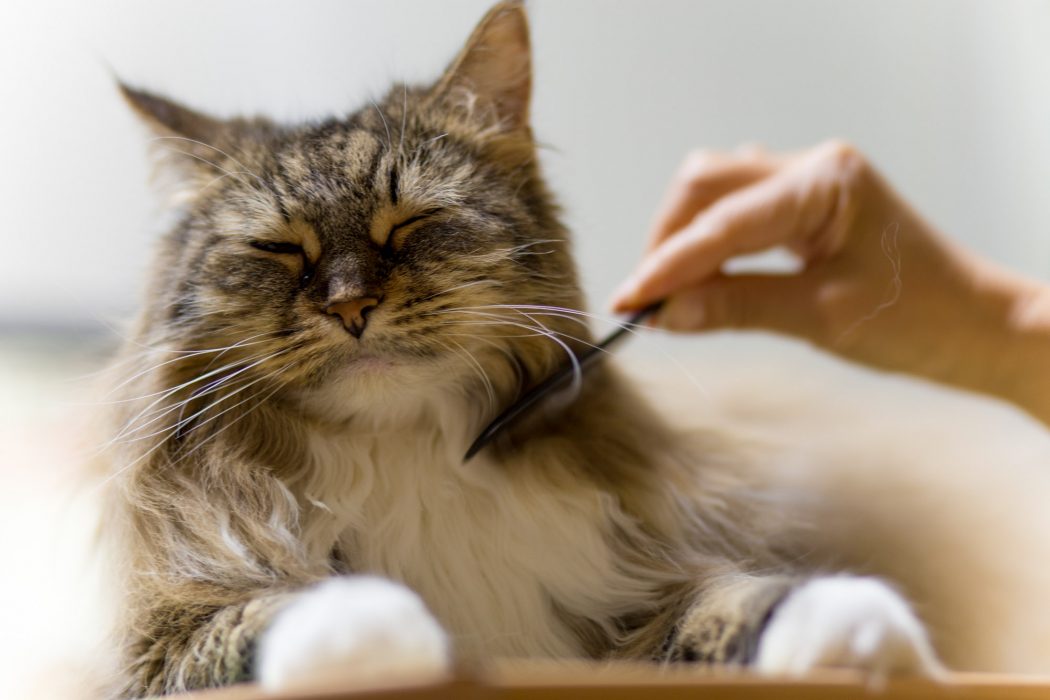With warmer temperatures on the horizon, it’s important to be on the lookout for fleas and ticks. However, those pesky hitchhikers aren’t exclusive to summer months, so checking your feline for them should be a regular part of your post-adventure routine year-round.
Fleas and ticks are uncomfortable. They bite and irritate your cat’s skin, but they can also transmit potentially fatal diseases in the process. Collars and topical treatments can help prevent infestations, but periodic body checks are an extra assurance that those critters aren’t given time to attach or lay eggs.
Checking Your Cat for Ticks
According to PetMD, ticks love dark, hidden places on a cat’s body. If your cat has a longer coat, this may make them more difficult to spot. But once a tick finds a place to feed, it hunkers down and begins growing in size.
Using your fingers or a small flea comb, start at your cat’s head and work your way to his tail. Don’t simply comb his fur—make sure to feel along his skin. If you feel a bump, check the area before moving on. If you’re using a brush or comb, don’t force the comb over a bump. You don’t want to accidentally separate the tick’s body from its head.
Make sure to check the following spots on your cat’s body:
- Neck and underneath the collar
- Under front and rear legs
- Between toes, both on the bottom and top of the paws
- Under tail and around the anus
- Ears, both inside and out
Your cat might alert you to an unwanted visitor, too. Excessively scratching and licking, especially in a particular spot, could indicate a tick has latched onto your feline. If your cat repeatedly shakes her head, the tick may have burrowed deep in the inner ear canal, so make an appointment with your veterinarian so they can check.
If you find a tick on your cat, don’t panic. Tick removal can be very quick and easy if done correctly. PetMD has step-by-step instructions for how to remove a tick and details on all the supplies you’ll need. It’s not a bad idea to assemble some tick supplies and keep them in your cat’s first-aid kit so you have everything on hand.
Checking Your Cat for Fleas
Unlike ticks, fleas are even smaller and constantly on the move. This can make them difficult to spot. However, just like ticks, you can comb your cat’s coat and body to check for their presence.
Using a flea comb, check the same areas you would for a tick: underneath your cat’s legs, along his belly and neck, and the base of his tail. If fleas are present, the comb should lift them off the skin and out of the fur. But be warned: Fleas jump and may try to relocate to another part of your cat’s body. Have a bowl of water nearby, and dip the comb inside between each brushing.
You also want to pay attention to your cat’s behavior, as this may be the most obvious sign of fleas. Fleabites are extremely irritating and can cause inflammation that leaves your cat’s skin red and bumpy. She may excessively scratch or nibble an inflamed area, which could result in localized hair loss. Common areas for inflammation include the ears, back of the neck and the belly.
Fleas are easily treatable, but it’s important to remember that fleas can travel onto non-living surfaces, like your carpet, couch or bedding, so be sure to vacuum your floors and wash you and your cat’s bedding frequently.
Prevention is key when it comes to fleas and ticks, so talk to your veterinarian about the best treatment for your cat. Post-adventure checks may seem daunting at first, but the more you do it, the more your cat will adapt to the routine. And a flea- and tick-free cat makes for one happy adventurer!




